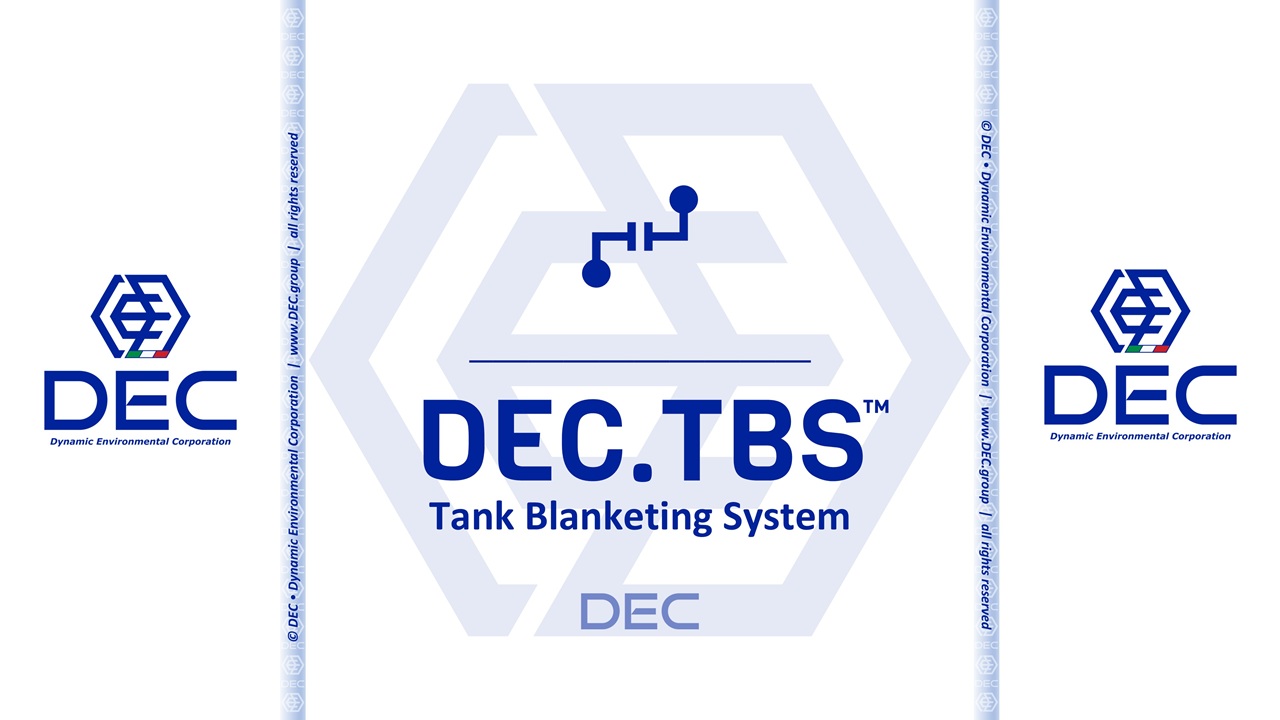
Tank Blanketing System
DEC.TBS™
In industries such as petrochemicals, polymers, and specialty chemicals, maintaining the integrity of stored materials and equipment is paramount. Nitrogen blanketing has emerged as a cornerstone technique for achieving this goal, leveraging the inert properties of nitrogen gas to safeguard products and processes. The DEC.TBS™ Tank Blanketing System, designed with precision and reliability in mind, exemplifies this approach, offering engineers a robust solution to mitigate risks and enhance operational efficiency. This article explores the principles, purposes, and practical applications of the DEC.TBS™ system, providing a technical overview for professionals seeking to optimize their facilities.

Nitrogen Blanketing in Industrial Processes
Nitrogen blanketing involves maintaining a protective layer of nitrogen gas within a vessel, tank, or pipeline. By displacing oxygen, moisture, and other reactive contaminants, this technique prevents undesirable chemical reactions and preserves the quality of sensitive materials. The DEC.TBS system integrates advanced control mechanisms to ensure consistent blanketing, addressing both safety and quality concerns in high-stakes environments.
The key purposes of nitrogen blanketing, as delivered by the DEC.TBS™ system, include:
How it works?
The DEC.TBS Tank Blanketing System operates through a combination of low-pressure blanketing and purging, and continuous monitoring—each tailored to specific operational needs.
The DEC.TBS system’s design emphasizes modularity and scalability, allowing it to adapt to a range of vessel sizes and process demands. Its control algorithms account for variables such as temperature fluctuations, liquid level changes, and atmospheric pressure shifts, ensuring consistent performance.
Applications Across Industries
The versatility of the DEC.TBS Tank Blanketing System makes it a valuable asset in diverse engineering contexts:
Benefits and Considerations
The DEC.TBS system offers several practical advantages. Its automated controls reduce operational complexity, while its smart construction minimizes maintenance downtime. The system’s ability to integrate with existing SCADA (Supervisory Control and Data Acquisition) platforms allows for seamless incorporation into broader process management frameworks. Additionally, its energy-efficient design—balancing nitrogen consumption with performance—aligns with sustainability goals, a growing priority in modern engineering.
Conclusion
The DEC.TBS Tank Blanketing System represents a sophisticated yet practical solution for engineers tasked with protecting industrial assets and products. By leveraging nitrogen’s inert properties, it addresses critical challenges—oxidation, fire risks, contamination, pressure instability, and moisture ingress—while offering flexibility across applications. As industries continue to demand higher standards of safety and efficiency, systems like the DEC.TBS stand out as essential tools in the engineer’s toolkit, blending cutting-edge technology with proven principles to deliver reliable results.
Solvent Storage and Distribution systems • DEC.SSD™
For additional configurations, please check DEC.SSD™ • solvent storage and distribution systems.
